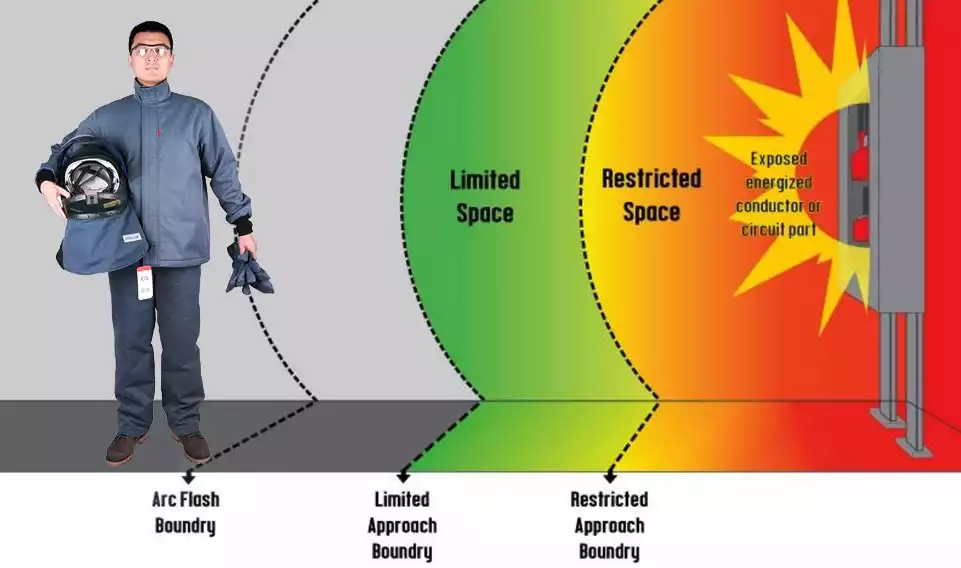Shanghai, China
+86-17317656853
inquiry@cgprotection.com



Arc flash PPE (Personal Protective Equipment) levels and arc flash boundaries are two different concepts related to electrical safety in the workplace.
Arc flash PPE levels refer to the level of protection required by workers who may be exposed to the hazards of an arc flash incident. These levels are determined by the amount of energy released during an arc flash incident, and they range from Level 1 (requiring the least amount of protection) to Level 4 (requiring the most protection). The appropriate level of arc flash PPE required for a specific task should be determined by a qualified person through a hazard analysis.
Arc flash boundaries, on the other hand, refer to the distance from an arc flash hazard where a worker may be at risk of receiving a second-degree burn or worse if an arc flash incident were to occur. The arc flash boundary is established based on the potential energy level of the electrical equipment, and it is typically measured in feet or meters. The arc flash boundary is established to ensure that workers are not exposed to the hazards of an arc flash incident, and it is used to determine the appropriate level of PPE required for workers who may be working within the arc flash boundary.
In summary, while arc flash PPE levels and arc flash boundaries are both related to electrical safety in the workplace, they are two different concepts. Arc flash PPE levels refer to the level of protection required by workers, while arc flash boundaries refer to the distance from an arc flash hazard where workers may be at risk of receiving a second-degree burn or worse.










© 2023 Shanghai C&G. All Rights Reserved.